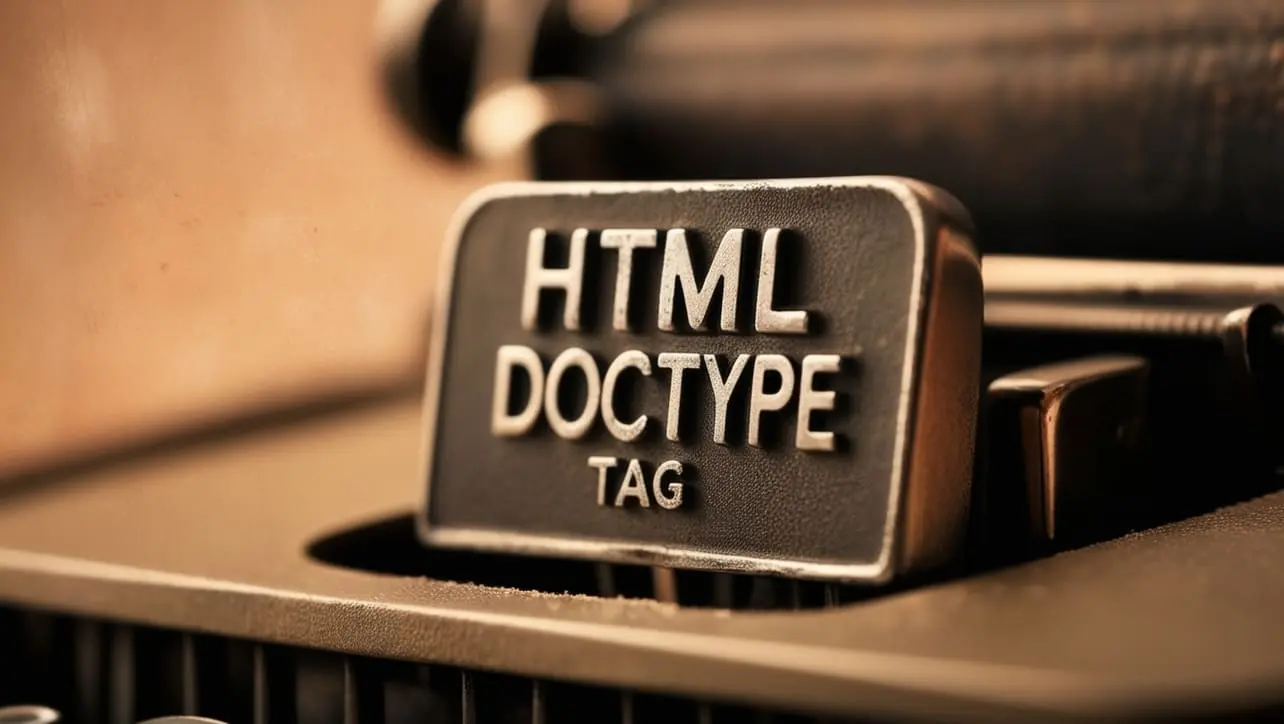
HTML Topics
- HTML Intro
- HTML Basic
- HTML Editors
- HTML CSS
- HTML Tags
- <!--...-->
- <!DOCTYPE>
- <a>
- <abbr>
- <address>
- <area>
- <article>
- <aside>
- <audio>
- <b>
- <base>
- <bdi>
- <bdo>
- <bgsound>
- <blink>
- <blockquote>
- <body>
- <br>
- <button>
- <canvas>
- <caption>
- <cite>
- <code>
- <col>
- <colgroup>
- <data>
- <datalist>
- <dd>
- <del>
- <details>
- <dfn>
- <dialog>
- <div>
- <dl>
- <dt>
- <em>
- <embed>
- <fieldset>
- <figcaption>
- <figure>
- <footer>
- <form>
- <h1> to <h6>
- <head>
- <header>
- <hgroup>
- <hr>
- <html>
- <i>
- <iframe>
- <img>
- <input>
- <ins>
- <kbd>
- <label>
- <legend>
- <li>
- <link>
- <main>
- <map>
- <mark>
- <menu>
- <meta>
- <meter>
- <nav>
- <noscript>
- <object>
- <ol>
- <optgroup>
- <option>
- <output>
- <p>
- <param>
- <picture>
- <pre>
- <progress>
- <q>
- <rp>
- <rt>
- <ruby>
- <s>
- <samp>
- <script>
- <search>
- <section>
- <select>
- <small>
- <source>
- <span>
- <strong>
- <style>
- <sub>
- <summary>
- <sup>
- <svg>
- <table>
- <tbody>
- <td>
- <template>
- <textarea>
- <tfoot>
- <th>
- <thead>
- <time>
- <title>
- <tr>
- <track>
- <u>
- <ul>
- <var>
- <video>
- <wbr>
- HTML Deprecated Tags
- HTML Events
- HTML Event Attributes
- HTML Global Attributes
- HTML Attributes
- HTML Comments
- HTML Entity
- HTML Head
- HTML Form
- HTML IndexedDB
- HTML Drag & Drop
- HTML Geolocation
- HTML Canvas
- HTML Status Code
- HTML Language Code
- HTML Country Code
- HTML Charset
- MIME Types
HTML DOCTYPE tag

Photo Credit to CodeToFun
🙋 Introduction
The <!DOCTYPE> declaration might seem like a mere technicality, but it plays a pivotal role in defining the document type and version of HTML being used.
In this guide, we'll delve into the importance and implementation of the HTML <!DOCTYPE> tag.
🤔 What is <!DOCTYPE> Tag?
The <!DOCTYPE> declaration is not a tag in the traditional sense; rather, it's an instruction to the browser about the version of HTML the document is written in. This declaration helps browsers to render the content correctly.
💡 Syntax
Include the <!DOCTYPE> declaration at the very beginning of your HTML document, before the <html> tag:
<!DOCTYPE html>
<html>
<!-- Your HTML content here -->
</html>🧰 Purpose and Versions
The primary purpose of the <!DOCTYPE> declaration is to inform browsers about the HTML version used in the document. The most common version is HTML5, represented by:
<!DOCTYPE html>HTML 4.01 Strict:
<!DOCTYPE HTML PUBLIC "-//W3C//DTD HTML 4.01//EN" "http://www.w3.org/TR/html4/strict.dtd">XHTML 1.0 Strict:
<!DOCTYPE html PUBLIC "-//W3C//DTD XHTML 1.0 Strict//EN" "http://www.w3.org/TR/xhtml1/DTD/xhtml1-strict.dtd">📚 Importance
Browser Rendering:
The
<!DOCTYPE>declaration ensures that browsers interpret your HTML document correctly. It influences the browser's rendering mode, affecting factors like box model handling and CSS styles.Validation:
Including the correct
<!DOCTYPE>declaration is crucial for HTML validation. It helps in adhering to web standards and ensures that your document follows the prescribed guidelines.
🖥️ Browser Support
The <!DOCTYPE> declaration is universally supported by all major browsers. It is a standard part of HTML document structure, and proper usage is essential for consistent cross-browser compatibility.
- Google Chrome: Fully supported.
- Mozilla Firefox: Fully supported.
- Microsoft Edge: Fully supported.
- Safari: Fully supported.
- Opera: Fully supported.
- Internet Explorer: Fully supported.
🏆 Best Practices
- Always include the
<!DOCTYPE>declaration at the beginning of your HTML document. - Use the HTML5 declaration (<!DOCTYPE html>) for modern web development.
- Regularly validate your HTML documents using online validators to catch any potential issues.
🎉 Conclusion
While the <!DOCTYPE> declaration might seem like a small detail, its correct usage is integral to a well-structured HTML document. Understanding its significance and implementing it appropriately ensures that your web pages render consistently across different browsers.
👨💻 Join our Community:
Author

For over eight years, I worked as a full-stack web developer. Now, I have chosen my profession as a full-time blogger at codetofun.com.
Buy me a coffee to make codetofun.com free for everyone.
Buy me a Coffee












If you have any doubts regarding this article (HTML DOCTYPE tag), please comment here. I will help you immediately.